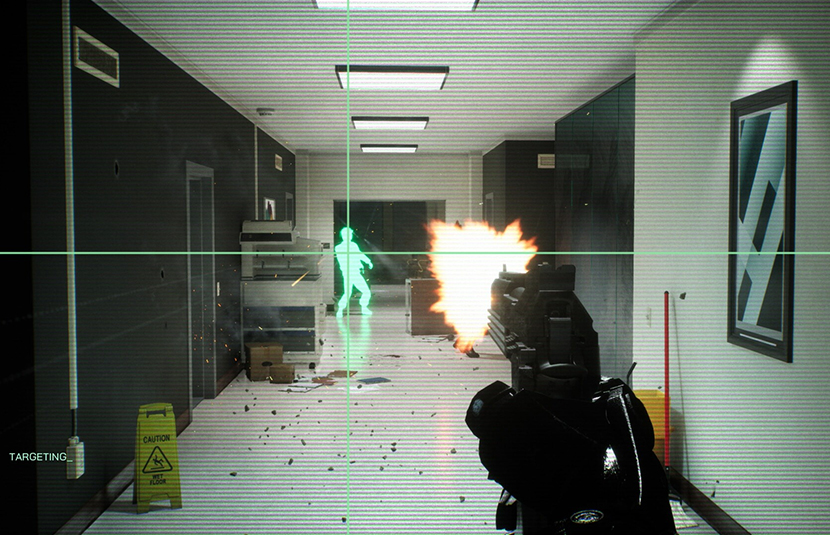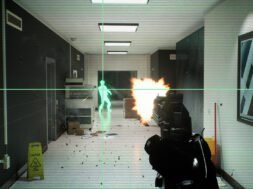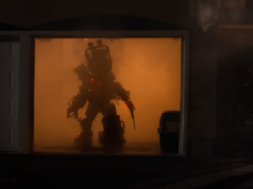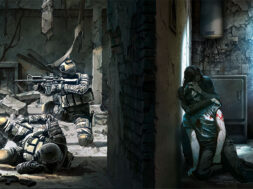
Compared to a lot of other genres out there, the Souls-like is still in its relative infancy, with most of its major tropes only having been crystallised in the last few years or so. However, despite the fact that it’s not been around long in the grand scheme of things, it’s already turned into a highly competitive field. At the time of writing, the relevant Steam tag has catalogued 1,212 games, which range from indie hopefuls to larger AAA efforts at dethroning the greats over at FromSoftware. And unlike with, say, first-person shooters or platformers, there’s only so much that a developer can actually do here to distinguish themselves.
Indeed, because the definition of a Souls-like is so incredibly prescriptive (with them all needing to have variations on the same death system, combat mechanics, level design, and even certain item types), it’s inevitable that many also-rans get lost in the shuffle.
To stand even the faintest chance of breaking through nowadays, you’ve got to put a fresh spin on the formula or otherwise find a creative way of adding unique flavouring. In most cases, this simply means adopting a new visual motif that hasn’t been done before.
For example, you’ve got Code Vein (the anime souls-like), The Surge (the dystopian souls-like), Thymesia (the black plague souls-like), and Star Wars Jedi: Fallen Order (the Galaxy Far, Far Away souls-like). Bar some superficial differences, they’re all basically the same once you get under the hood, yet the novel theming really helped set those ones apart from the crowd. It’s why they managed to catch on, while so many others had faded into obscurity.
It’s surprising then that CI Games’ Lords of the Fallen is getting another shot. Because it had no such USP when it first launched back in 2014. On the contrary, it was just another dark fantasy RPG and not even a particularly memorable one at that.
Still, it must have sold well enough to convince the publisher that it’d be worth a second try and so now we’re getting Lords of the Fallen (2023). A requel of sorts — that’s looking to win back old fans and simultaneously rope in newcomers — it’s essentially a complete do-over for the franchise.
As such, you don’t have to know anything about the first game to follow the story (although veterans will obviously appreciate some of the finer details) and it’s been designed as a much more welcoming experience for greenhorns. Most importantly, however, the brand seems to have finally identified its distinctive niche.
To find out more about this, and the overall attempt at resurrecting Lords of the Fallen, we attended an in-depth preview at this year’s Gamescom. Here’s what we discovered.
A Fresh Start
As per souls-like tradition, the original Lords of the Fallen had an obfuscated and rather confusing narrative. Something about evil demons waging war against the human realm, an order of benevolent demigods, factions with questionable allegiances, the sins of mankind and various cross-dimensional shenanigans. You don’t need to worry about any of that here, though, because developer HexWorks has effectively wiped the slate clean with their reboot.
What matters is that a colossal entity, named Adyr, once ruled over humanity with an iron fist, until he was defeated (potentially with your aid, depending on the ending you got in the first game) and driven underground. Yet much like Sauron the Deceiver, this evildoer didn’t stay down for very long and his malignant influence continued to spread throughout the land in his absence.
Now, he has amassed enough followers to pose a serious threat once again. He’s even wiped out the brotherhood of holy sentinels, who were charged with preventing his second coming, leaving the realm of Mournstead almost entirely defenseless.
That’s where you come in. As a “Dark Crusader,” you are the last thing standing between Adyr and his goal of total world domination. You subsequently embark on an epic quest to slay the foul demon once and for all but, suffice it to say, the odds are stacked firmly against you in that endeavour.
At least you’ve got one ace hidden up your sleeve! Namely, you’ve been bequeathed with a special lantern that enables you to cross between the respective realms of both the living and the dead. This sacrilegious artefact can be used to help you traverse the environment, bring down magical foes and even temporarily prolong your life. Who knows, it might just give you the edge you need to best Adyr after all.
As you might have guessed that lamp is Lords of the Fallen’s revelatory gimmick, from which the title derives much of its newfound identity. It’s a literal game-changer that adds a much-needed extra dimension to proceedings and in some ways turns the Souls-like genre completely on its head.
But let’s not get too ahead of ourselves. Instead, we should start right at the beginning of our preview.
Choose Your Fighter
Where 2014’s Lords of the Fallen railroaded you into playing as the most identikit angry, bald warrior man imaginable, the requel lets you customise your own character from scratch.
The options are quite robust as well, with you being able to tailor everything from their cheekbones to their eye colour, hairstyle, and body shape. Not to mention, the interface for tweaking all of these preferences is remarkably intuitive, with you adjusting sliders to change things like your height and weight.
Truth be told, we were on the clock with our 1-hour preview, so didn’t have much spare time to fiddle around with these settings in forensic detail. Nevertheless, we could tell that you’ll have a good amount of creative freedom when it comes to designing your ideal crusader here.
We did spend a little longer thinking about our class, however, working on the assumption that there wouldn’t be an opportunity to respec in this relatively short session. There’s a total of 9 starter builds to pick from (or 10 should you plump for the deluxe edition), including: the roguish “Exiled Stalker”; the classic sword-and-shield bearing “Hallowed Knight”; the defensive “Mournstead Infantry”; and the “Orian Preacher” for those who fancy dabbling in faith-based magic.
While we were admittedly tempted to push our luck as a “Condemned” (the game’s prisoner class, with incredibly low stats and a literal shit bucket as their weapon), we decided against that in the end, and went for the eminently more sensible “Partisan.” Clad in chainmail and wielding a flail, this seemed like a pretty decent option for us, especially since they also had access to a crossbow that was more effective than you might expect.
Nailing the Fundamentals
With our selection made, we were then dropped into a pacy tutorial dungeon that got us up to speed with all of the basic mechanics. If you’re even vaguely familiar with FromSoft’s output, then most of the systems here will come as second nature to you and muscle memory will automatically kick in. But it was still nice to have a crash course anyway.
A lot of the button mappings for Xbox have even been kept exactly the same as they are in Dark Souls, with LB serving as your block, RB as your light attack, RT being assigned to heavier hits, X being reserved for consumables and Y letting you switch weapon stances. Hey, if it ain’t broke don’t fix it!
That smart philosophy — which we aren’t knocking by the way — seems to have been extended to most aspects of the game design, as Lords of the Fallen largely plays out as you’d imagine. Combat is mainly about judging attack windows, timing your quicksteps and dodges or, if you’re like me, cowering behind a shield until your opponent gets fatigued. Plus, there’s the usual backstab ability and drop-strikes, as well as some special moves that are explicitly tied to the lamp (more on that later).
None of it reinvents the wheel, yet that’s not such an issue when the foundations are as strong as they are here. Indeed, we’d probably say this is the most satisfying and responsive iteration of Dark Souls combat that we’ve seen outside of, well, Dark Souls.
There’s a pleasing weightiness to it whenever your hits connect with a foe, all of the animations feel suitably fluid, and it gets properly intense when you have to deal with larger groups. We were particularly happy with our weapon of choice being a flail, because wailing on undead soldiers using that never got old, thanks in no small part to the impressive physics that caused it to swing around in a believable fashion.
On that note, Lords of the Fallen is a game that’s clearly been polished to perfection. Not only does it hold up from a performance perspective, but the visuals are truly sumptuous as well. You know, in so far as gothic, morbid nightmare worlds can be pleasant to look at. As was also the case with our recent Alan Wake 2 preview, we were blown away by the tremendous lighting effects on display here, in addition to the richly detailed textures that quite frankly outclass anything you’d see in a FromSoftware game.
Of course, that studio has never been too preoccupied with delivering high-fidelity graphics (Demon’s Souls was a bit of an eyesore upon original release) and has instead wowed us more with their inspired art-direction.
Luckily, Lords of the Fallen is no slouch in this department either. We only get to see a handful of environments in our preview session (the aforementioned cavernous dungeon and then a ransacked village just on the outskirts of an ablaze fortress) but they both made strong impressions during that whistlestop tour.
Likewise, the macabre creature designs were all really cool, as we encountered hooded wraiths and towering skeleton pyromancers that looked as though they’d be ripped straight from a heavy metal album cover. If this enemy variety can be sustained throughout the entire game, then we are in for a treat and eagerly look forward to seeing what other fearsome beasties are dwelling in the land of Mournstead.
And yet that’s not even the best thing about the art design in Lords of the Fallen. What really stood out was how every single location has a pair of (equally well-developed) renditions. Which finally brings us to that much-touted lamp mechanic.
Two Hellscapes For The Price of One
To recap, you have the ability to walk two separate — but overlapping — planes of existence in Lords of the Fallen. There’s the realm of the living (Axiom), which is your standard dark fantasy setting and the default world, and then there’s the realm of death & decay (Umbral).
The latter is cold, grey, and barren; inhabited by poor souls who have been grafted into the very landscape itself, and structures that appear to be made from the ossified corpses of giants. If you played Bloober Team’s The Medium, then it’ll no-doubt evoke memories of that game’s chilling interpretation of the afterlife. It’s even got the same disembodied hands that sprout up from the ground and reach out towards you.
So, in a nutshell, there are two fully-fledged maps occupying the same space here. Axiom and Umbral share similar layouts and geographical features, but one of them is just a tad nicer than the other.
In general, you’ll want to stick to the land of the living wherever possible, as it’s slightly less hostile and doesn’t actively resent your presence like Umbral does. Alas, sometimes you’ll have no choice but to cross over to the other side, either because the golden path is blocked in Axiom or because you have met a grisly end.
The conduit that allows you to phase back and forth between these realities is, as already discussed, your trusty lamp. When in Axiom, you can raise this device to take a quick peek into Umbral— as though your light is piercing through some kind of mystic veil — and decide if it’s worth committing to a realm shift.
Among other things, raising your lantern will enable you to take stock of the various horrors that await you in the underworld, and also to see if its topography offers a way through pesky environmental obstructions. For instance, you might hit a dead end in Axiom, only to realise that the wall impeding your progress doesn’t exist in its dexter Umbral location. Or perhaps you might stumble across a ravine that is uncrossable in one world but bridged by a massive spinal column in the other.
Essentially, if you’re ever stuck for where to go next, you probably need to think about switching realms. Said transition occurs either at your own command (by holding up the lantern and then pressing the requisite button) or by getting yourself killed. We recommend the former option, as you have finite chances when it comes to death here and your healing supplies don’t get replenished when you awaken in Umbral.
The other thing you need to keep in mind is that the lamp offers a strictly one-way trip. Once you’re in the far more treacherous Umbral, you cannot just retreat to the comparative safety of Axiom by clicking together a pair of ruby slippers. Instead, you’ve got to find an Ancient Vestige (a Bonfire in all but name) and rest there in order to bring yourself back to life. This little wrinkle creates a thrilling risk-reward dynamic, forcing you to weigh up the pros & cons of each prospective realm shift.
Granted, there are hidden shortcuts, secrets and desirable pieces of loot for you to plunder in Umbral, but there are also far greater dangers lurking around every corner. Enemies are much tougher and will spawn with increased regularity. Meanwhile, there’s a never-wracking timer that means, the longer you spend in this phantom plane, the more likely its spectral terrors are to catch whiff of your scent. Think of it a bit like a bounty system.
Honestly, it’d be impossible to explain all of the nuances and intricacies of the Umbral mechanic in this preview. After all, its seismic impact can be felt in every single facet of Lords of the Fallen, from the exploration right through to the puzzles and combat.
We haven’t mentioned how you can use the lamp to rip an enemy’s soul from their body and then ragdoll them around, nor how some of your opponents will be shielded by parasitic creatures that are invisible to the naked eye in Axiom. Even the bosses occasionally factor into the gimmick, with some of them having unique phases that can only be triggered by entering specific realms.
In short, the whole dual-world concept is an ingenious idea on the part of HexWorks. It really opens up new doors for player discovery, strategizing, and agonising decision-making.
With it, Lords of the Fallen has at long last found its transformative unique selling point and we can’t wait to see how much deeper it goes when the title launches in just a couple of months.
Published by CI Games and developed by HexWorks, Lords of the Fallen will be released on PC, PlayStation 5, and Xbox Series X|S on the 13th of October.















